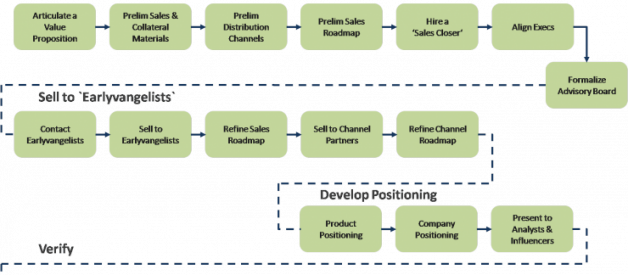Successful Strategies for Products that Win
You can find all my book summaries ? here.
The book provides hands-on instructions on how to go about customers, sales, marketing and building your company at different stages of your business. It can be dry at times, but looking back on it it?s a great checklist on what to do when.
Most entrepreneurs feel their journey is unique. [?] However dissimilar the stories may be in detail, their outline is always the same. Most entrepreneurs travel down the startup path without a roadmap and believe no model or template could apply to their new venture. They are wrong. For the path of a startup is well worn, and well understood. The secret is that no one has written it down.
The Path to Disaster: The Product Development
Classic Product Development
Concept ? Product Development ? Alpha/Beta Test ? Launch
Problems
- ignores customers
- focus on customer ship date, doesn?t mean they understand customers
- focus on execution rather than learning
- no meaningful milestones ? you should focus on: UNDERSTANDING YOUR CUSTOMER
- Death Spiral: cost of getting a launch wrong ? keep giving bad news, focusing on the wrong thing
The Path to Epiphany: The Customer Development
- Customer Discovery (SEARCH) ?
- Customer Validation (SEARCH)?
- Customer Creation (EXECUTION)?
- Company Building (EXECUTION)
- Testing wether business model is correct ? does the product solve a customer pain?
- Develops a sales model that you can replicate
- Create and drive end-user demand
- Transition from learning/discovery to well-oiled machine for execution
Customer Discovery
Discovery wether the problem, product and customer hypotheses in your business plan are correct.
? Get Outside the Building
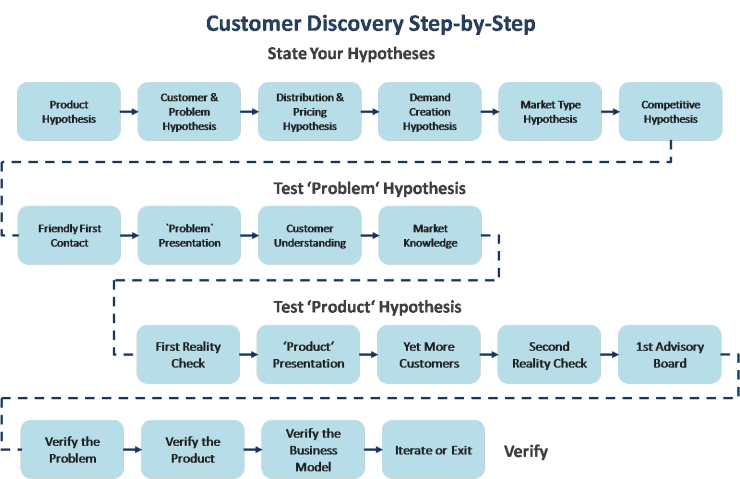
Get Buy In
- articulate your mission and core values
State your Hypotheses
- rigorous writing
- capture hypotheses which embody your company?s vision, business model and assumptions
Test Problem
- test them with potential customers
Test Product
- test with customers
- goal is not to sell, but to test concept and features
Verify
- Verify customers? problems
- that the product solves the problems
- that customers will pay for it
- that this will result in a profitable business model
Customer Validation
This is where the rubber meets the road. Build a repeatable sales roadmap which sales and marketing can follow.
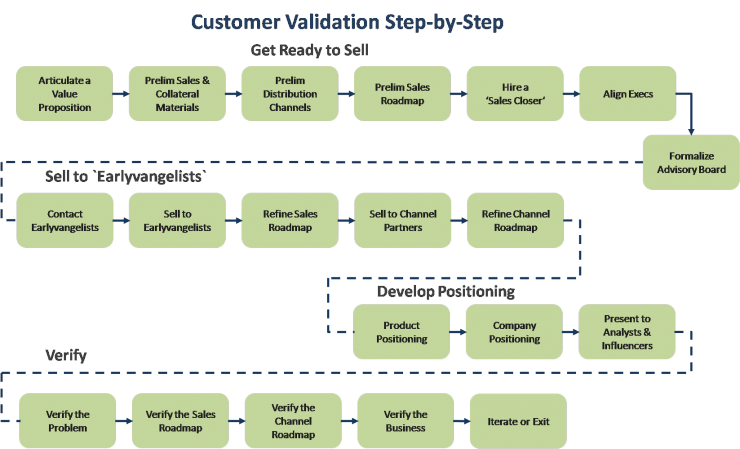
The customer discovery process turns the world upside down for experienced sales people. You are still validating ? you will start selling to a small set of early visionary customers. Don?t get this confused with selling ? you?re focusing on learning and finding a scalable/repeatable sales process.
Get Ready to Sell
- articulate your value proposition ? single, clear, compelling message of how you are different and why your product is worth buying
Sell to Early Evangelists
Giveaways do not prove customers will buy your product. The only valid way to test your assumptions is to sell the product.
- Visionaries know they have a problem, they tried to solve it themselves and they are ready for change
Positioning
- Now you have real feedback and facts ? develop your company / product / market positioning
Verify
- Summarise your findings
- Check whether you have learned enough to move on to customer creation
- Do you solve the problem? How well? What went wrong? Do you have the right channels? Did you get orders?
Customer Creation
Driving end-users into the sales channel.
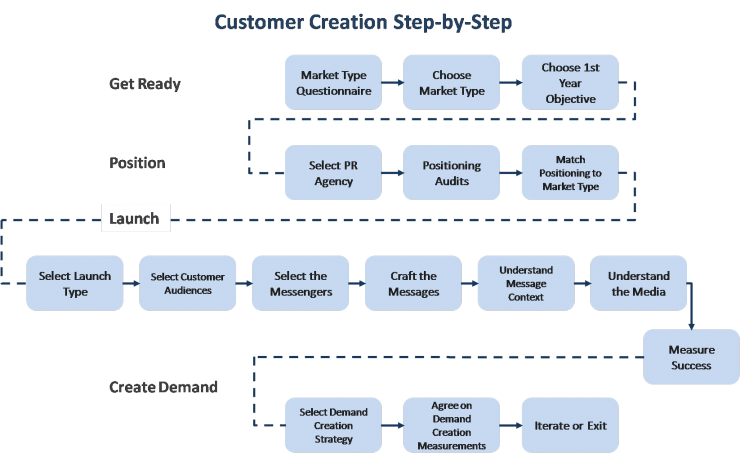
- What type of startup are you? Existing vs Resegmenting vs New Market
- What are your positioning messages (based on customers and what they want)?
The Team
At this stage you have NO marketing team, NO sales team ? everyone is on the Customer Development Team. Creating departments is not until the next phase.
One Year Objective
- Existing Market ? get market share
- New Market ? customer education + turning Visionaries into Promoters
Company Building
Transition from informal, learning and discovery-oriented to formal departments.
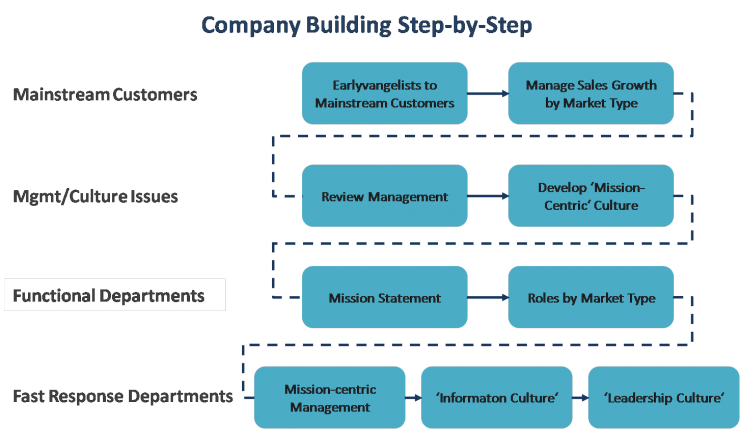
Before you hire you need to articulate the department?s goals and mission statements. Once you?ve hired it?s too late ? nobody is going to say ?Yeah? my position is superfluous?.
Implement Mission-Centric Management
- everyone knows what goal they are driving
- their limiting factors / levers they can pull / will pull if they don?t achieve their goals
- need to be understood by everyone not just top management
- good enough decision making
Information
- culture for information gathering
- but also disseminating and analysing
A good plan violently executed now is better than a perfect plan next week.
Keep superstars by integrating them as role models and coaches in larger teams. This is the ultimate test of great leadership.
You can find all my book summaries ? here.


